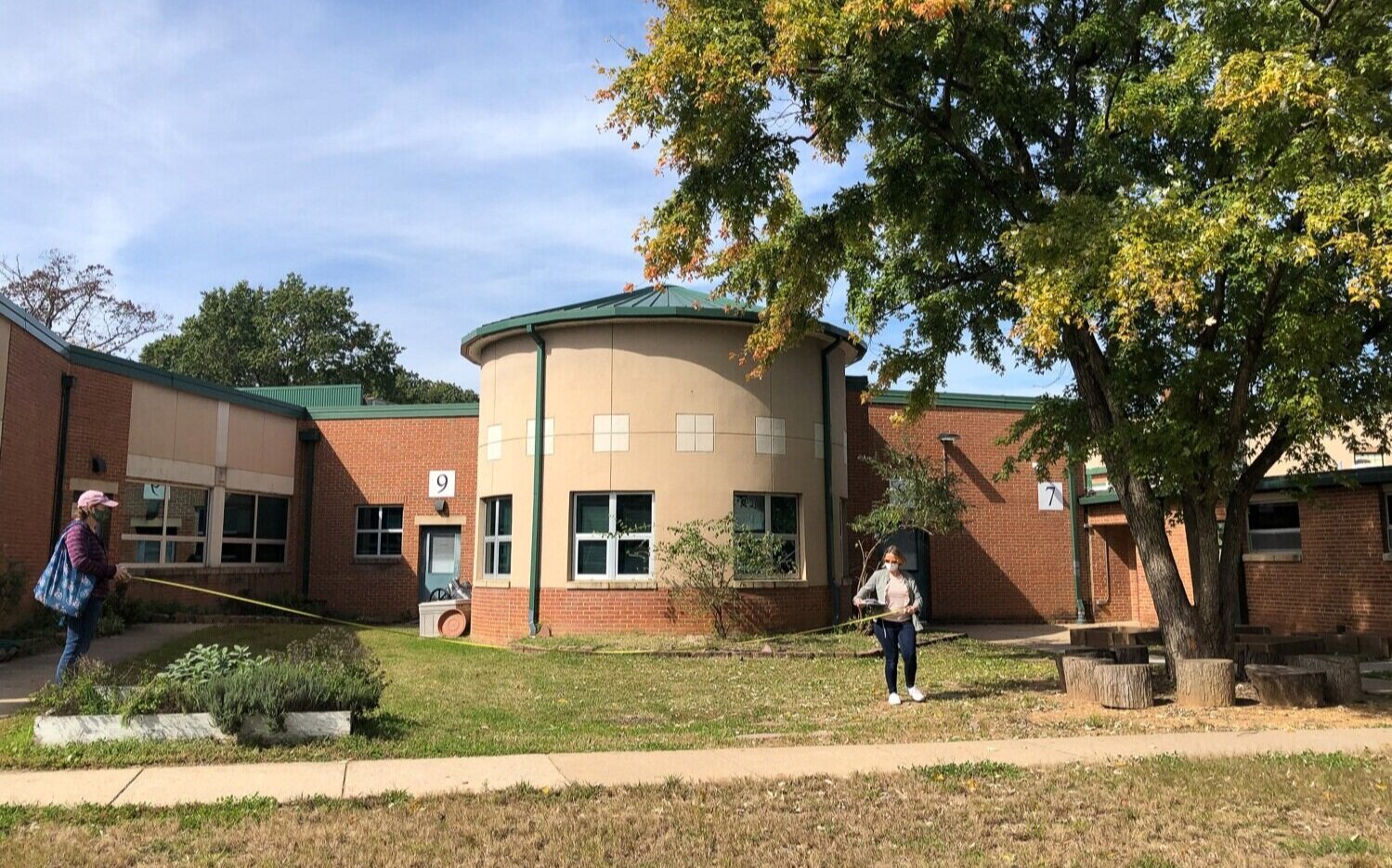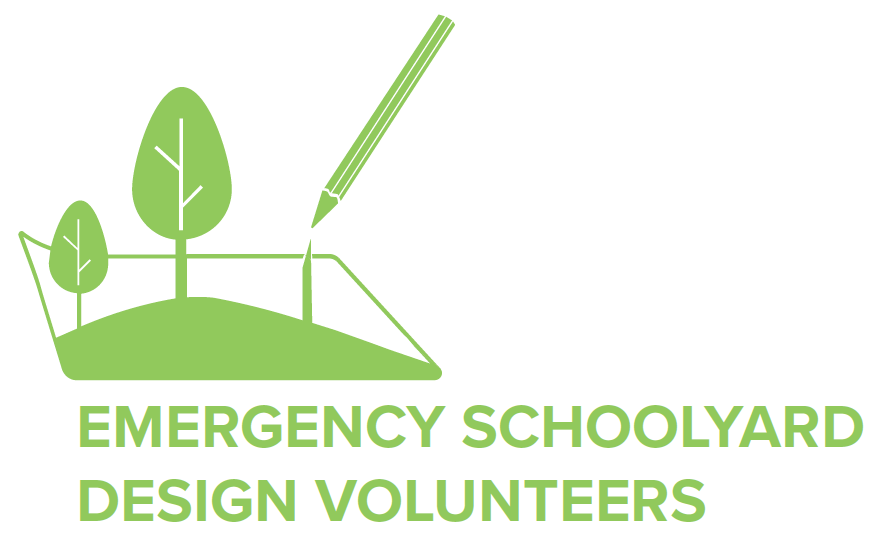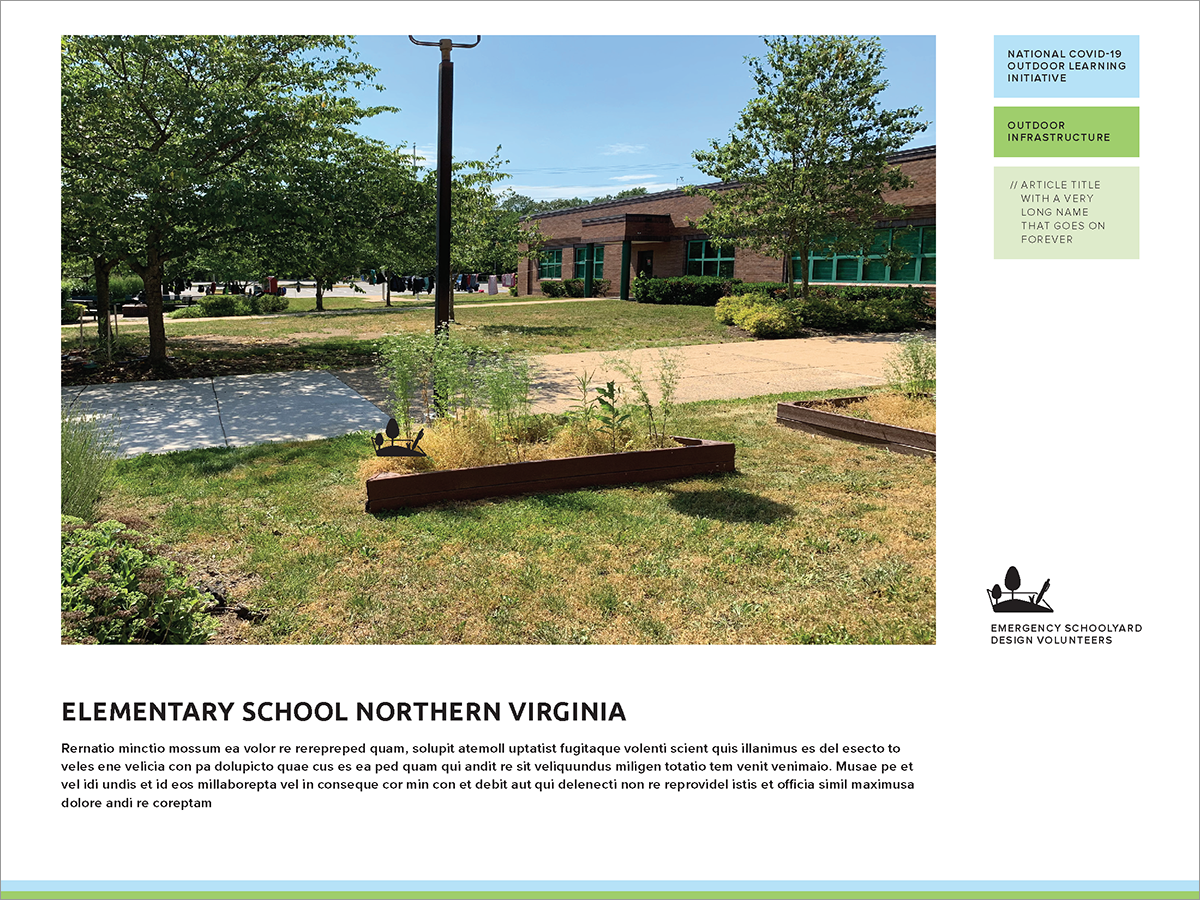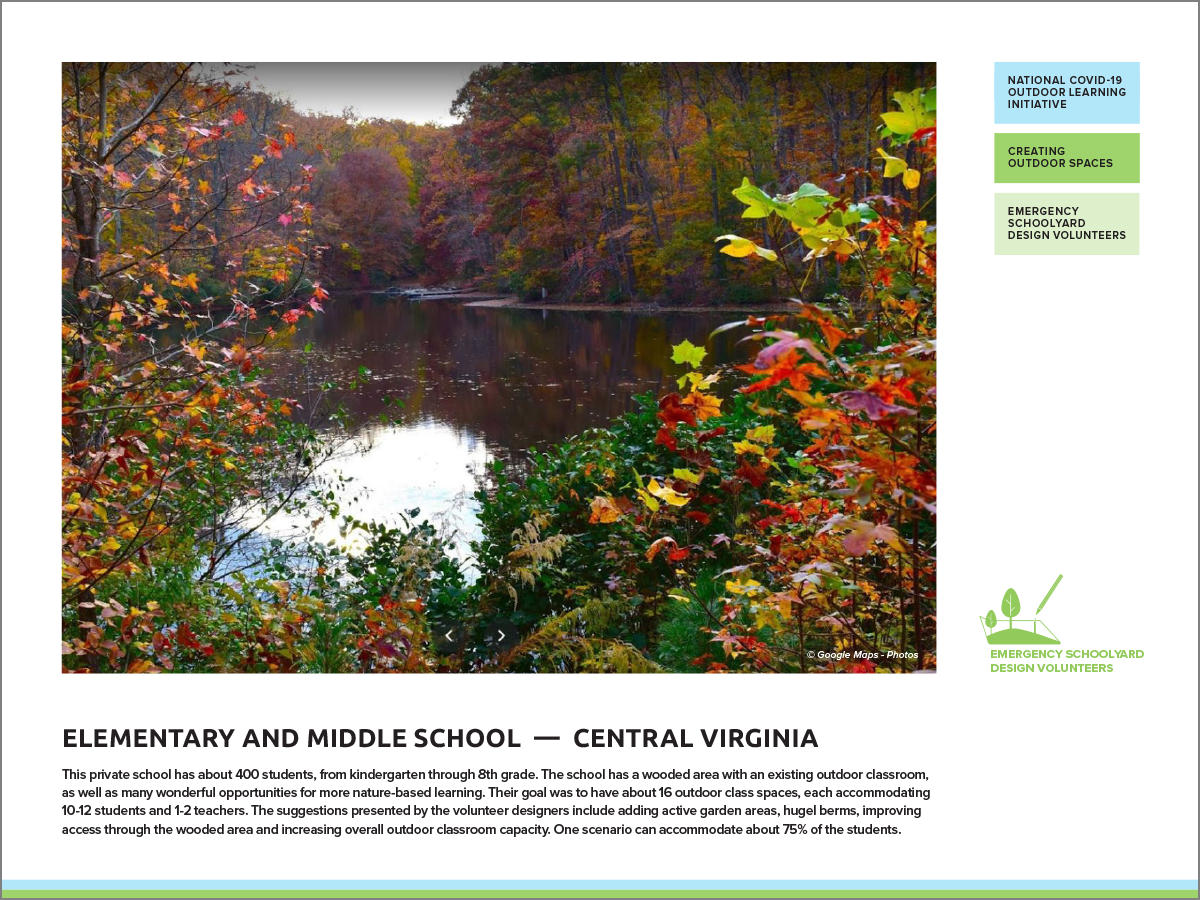Emergency Schoolyard Design Volunteers
From June 2020 through June 2021, the National COVID-19 Outdoor Learning Initiative was able to provide site planning assistance to schools and districts around the country via our Emergency Schoolyard Design Volunteers program. The volunteer designers provided specialized pro bono landscape planning assistance during the COVID-19 pandemic that is designed to help schools and districts consider their outdoor infrastructure needs, and create their first site diagrams. These diagrams are intended to help convey the school or district’s outdoor learning plans and help to build consensus within their school communities.
This page highlights success from the program, as well as other ways to be involved, either as a school or a landscape designer.
See the “Planning Examples” below for examples of outdoor learning concept diagrams that were created by the program’s volunteers from June 2020 through summer 2021. We are grateful for all who participated or volunteered! We hope these diagrams can offer some ideas for your campus, whatever stage of planning you are in — during the pandemic and beyond.
About the Program
The Emergency Schoolyard Design Volunteers program was founded by Claire Latané, ASLA, LEED AP, SITES AP, an assistant professor of Landscape Architecture at CalPoly Pomona and a member of Green Schoolyards America’s Collaborating Research Team. This national program is led by Claire Latané, based in the Los Angeles area, and Nancy Striniste, MLD, CBLP, founder and principal designer at EarlySpace, LLC, based in the Washington, DC area.
The Design Volunteer program included several hundred landscape architecture and design professionals, faculty, and students from 38 states, offering their services to educational institutions for free. The Design Volunteers were organized in teams and were equipped to help schools and districts in their region with site-specific and climate-specific needs. Regional coordinators for this program were based in the Northeast, Mid-Atlantic, Pacific Northwest, Texas, and California.
The program received requests from about 250 schools and districts from 43 states, and nearly half received assistance in the form of site assessments or other planning support from the program volunteers.
NOTE: The Emergency Schoolyard Design Volunteer Program concluded in June 2021, and we are no longer accepting school or volunteer applications for this program.
Planning Examples
Below are some examples of work products created through the Emergency Schoolyard Design Volunteers program. These school ground concept diagrams are intended to help communicate outdoor learning ideas specific to each school, and to help each school community come to consensus about the placement of outdoor classrooms and programs on their grounds.
Creston, California
This rural central coast Title I school took advantage of existing shade to accommodate 100% of student enrollment.
Northern California
This elementary school can accommodate about 75% of their students, while keeping science and gardens curriculum goals in mind.
Roslindale, Massachusetts
This semi-urban Title I Boston public school is taking advantage of pockets of space to create outdoor learning and habitat.
Arlington, Virginia
This public middle school explored how to augment their existing garden spaces, including installing a permanent shelter.
Northern Virginia
This suburban elementary school explored how it could accommodate 50% of the students outside.
Davenport, California
This semi-rural elementary school developed creative outdoor learning spaces for its 150 students.
Northern Delaware
This suburban Montessori school was able to find ways to accommodate 100% of there students and address on-site water issues.
Harlem, New York
This urban elementary school seeks to move 30% of classes outside, taking advantage of existing tree canopy and gardens.
Central Virginia
This suburban K-8 private school augmented their existing campus features to accommodate 75% of their 400 students.
Arlington, Virginia
This Title 1 elementary school in the DC suburbs sought to provide classroom spaces for at least 50% of their 600 students.
Monterey Bay Area, California
This two-campus school sought to capitalize on existing landscape features to provide every student an outdoor learning experience.
Sandy Springs, Georgia
This elementary school is exploring how to accommodate at least 50% of their 600 students onsite, both indoors and outside.
Bend, Oregon
Upon closer look, this suburban elementary school found opportunities to add class space to existing shade and an existing natural area.
Northern Virginia
This mid-sized public school explored three scenarios which could each accommodate nearly 70% of their student enrollment.
Seattle, Washington
This compact, urban preschool found ways to create outdoor classrooms that also provided protection from rain and wind.
Collaborative for Healthy, Inclusive Learning Environments
If you are a Title 1 School interested in working with college or university students to research and plan healthier more equitable campus environments, please contact Claire Latané, assistant professor at Cal Poly Pomona and founder of the Emergency Schoolyard Design Volunteers: calatane@cpp.edu. You can also learn more about her work on her website.
Credits
The pro bono landscape design assistance program — the Emergency Schoolyard Design Volunteer Program — is part of the National Initiative’s Outdoor Infrastructure Working Group. It is organized by Claire Latané, ASLA, LEED AP, SITES AP and managed by Lauren McKenna, MLA. We are grateful for the team of dedicated volunteers from around the country who have helped create the many foundational resources that the program uses and who serve as volunteer regional co-leaders across the country. These incredible individuals have been assisting in organizing other volunteers and walking with schools as they consider outdoor learning. We would like to express our heartfelt thanks to all of the organizations and individuals who are collaborating to make this Initiative possible.
The program matches higher need schools with a small team of volunteer landscape architecture and design students, faculty, and professionals who will access your campus' needs for reopening using outdoor spaces and create concept diagrams to help schools visualize.
National COVID-19 Outdoor Learning Initiative
The National COVID-19 Outdoor Learning Initiative supports schools and districts around the country in their efforts to reopen safely and equitably using outdoor spaces as strategic, cost-effective solutions to increase physical distancing capacity onsite and provide access to abundant fresh air. The Initiative seeks to equitably improve learning, mental and physical health, and happiness for children and adults using an affordable, time-tested outdoor approach to keeping schools open during a pandemic.


























